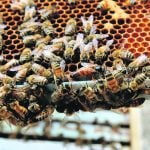Feedgrain prices had little effect on the feeder market this past week, with feeder cattle running $2-$3/cwt higher on average.
The yearling run has been delayed by approximately one month and lower volumes of feeder cattle were met with firm demand. Fed cattle prices were steady with week-ago levels at $113/cwt, as the stronger Canadian dollar tempered the upside.
Feedlot operators were a bit more aggressive, on ideas that lower beef production will eventually strengthen the fat market longer-term. The barley harvest will progress more rapidly over the next couple of weeks and prices have dropped over $25 per tonne since July.
Read Also

Near record September major grain deliveries: Statistics Canada
Canadian farmers made heavy deliveries of grains and oilseeds off the combine and into the commercial pipeline this September, with total deliveries of the major crops up 13.3 per cent from the same month the previous year, reported Statistics Canada.
Good-quality steers weighing 800 to 900 pounds sold in the range of $120-$130/cwt in central Alberta while 700- to 800-lb. replacement cattle traded from $138 to $148/cwt. Calves were actually a bit softer with 400- to 500-lb. steers selling for $165-$180/cwt in southern Alberta but again, only small groups of this weight category were available.
The U.S. Department of Agriculture cattle on feed report showed August inventory very similar to last year but placements were lower than expected. July placements were reported at 90 per cent of year-ago levels and the industry is watching how the U.S. drought situation influences the August numbers. The U.S. fed market was actually stronger, with fed cattle trading at $121/cwt, up $1 from a week earlier.
Feeder cattle futures have bounced off the recent lows and the March 2013 contract is trading at a $7/cwt premium to the October contract. This price spread suggests feeder cattle will be stronger later in winter and feedlot operators are buying now, instead of waiting for the higher prices as time progresses.
Barley prices will likely experience additional weakness over the next month, which should also be supportive to the feeder cattle market. Earlier, I believed the record-high feedgrain prices would keep the feeder market under pressure, but the market is reflecting a stronger price structure through the fall period.
















